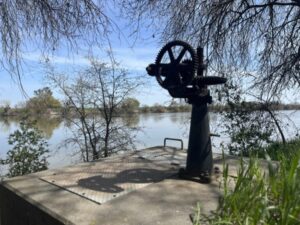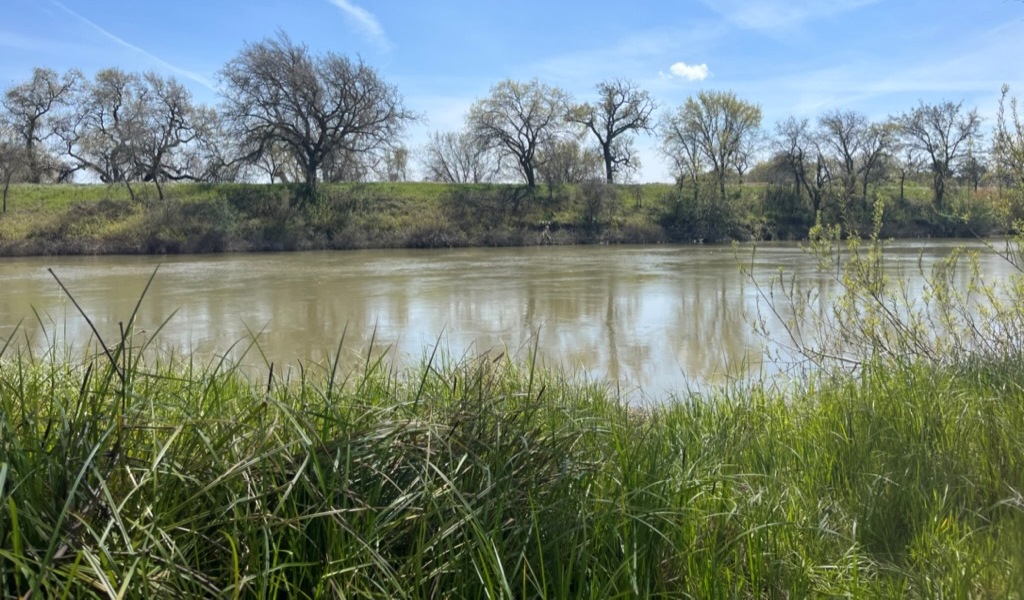Restoring California‘s Central Valley will take a village.
The effects of climate change on temperature and precipitation intersect with declining regional biodiversity and a long history of racial inequity that has increased flood risk for socially vulnerable communities.
To do this work effectively, restorative projects need data-driven approaches that maximize their impact.
Here’s how Marcus Kahn of American Rivers describes the process of quantifying restoration opportunities in Elk Slough, near the Sacramento River:
American Rivers’ data collection and analysis at Elk Slough is a prime example of how we calibrate and implement successful restoration, and I was excited to leave the city and see habitat restoration in its early stages.
I departed the Bay Area and drove through the Sacramento-San Joaquin Delta before heading north on Highway 160, a meandering road atop the levees that gird the Sacramento River.
The East Bay’s suburban sprawl quickly turns to riverside towns separated from the farm fields that extend across the Delta by tree-lined banks that provide shade, cover, and habitat for salmon that forge upstream to spawn each year.
Today, I’ll be meeting my colleague, Kristan Culbert, Associate Director of California River Conservation, at the Elk Slough Fish Passage and Flood Improvement, a 9.5-mile slough that empties into the Sacramento River.
We convene outside the local library in the tiny town of Clarksburg, California, before venturing to the nearby slough on foot.
Elk Slough is separated from the Sacramento River by a culvert that was built in the 1950s.

The opening mechanism for the gate connecting Elk Slough to the Sacramento River. Credit American Rivers | Marcus Kahn.
The Elk Slough Fish Passage and Flood Improvement project, led by Reclamation District 999, provides an opportunity for scientists, conservationists, engineers, farmers and flood managers to collectively develop solutions that restore riverine wildlife habitat while protecting nearby communities from flood risk.
The project will redesign the gate separating Elk Slough from the Sacramento River, enhance native riparian forests along the banks of the Slough, and reduce flood risk for the town of Clarksburg and nearby farms protected by levees maintained by Reclamation District 999 and Reclamation District 150.
In support of the project, American Rivers used the HABITAT QUANTIFICATION TOOL to assess the quality and capacity of habitat for Swainson’s hawk and riparian land birds and identify potential restoration opportunities for the project.
The findings from this study also identified opportunities to improve agricultural land management to support a greater number of wildlife species.
Elk Slough provided an exciting opportunity to put these scientific tools to good use. Our findings showed that the many continuous tree stands in the project area provide excellent opportunities for riparian land birds to create nests, and that there are many opportunities for farmers to improve land management practices to better support foraging habitat for the state-listed Swainson’s hawk, which is commonly found nesting next to agricultural lands across the Central Valley.
The findings from this study have identified feasible, cost-effective strategies that local landowners can implement to benefit wildlife, such as choosing to grow more row crops that provide a better Swainson’s hawk foraging habitat.
American Rivers is a national leader in using impactful science-based decision-making to restore rivers. Our teams are skilled in using strategies ranging from managing boots-on-the-ground planning and construction of river restoration and dam removal projects to collecting scientific data to assess opportunities for wildlife enhancement.
Multi-benefit restoration work needs to be informed by scientific research and a clear articulation of priorities that aim to create a safe, sustainable home for communities and wildlife of the Central Valley.
This work represents how diverse partners from the agricultural, flood protection and environmental communities can come together to leverage on-the-ground scientific data in the planning and implementation of important riverine habitat restoration while at the same time improving flood protection for the local agricultural community.
And working in tandem with project partners to gather, assess, and utilize this research brings us closer to long-term sustainability along the Sacramento River, in California’s Central Valley, and beyond.
Featured photo shows Elk Slough near the Sacramento River. Credit American Rivers | Marcus Kahn.

